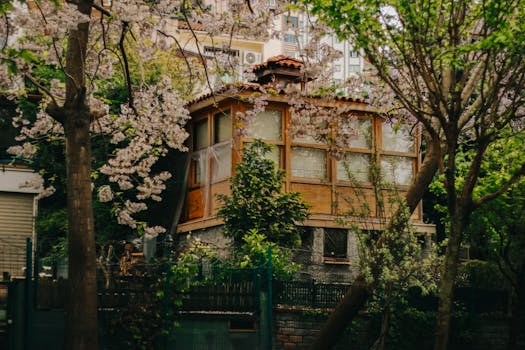
Urban Green Spaces: The Future of Outdoor Living in European Cities by 2025
Introduction to Urban Green Spaces
Urban Green Spaces are becoming increasingly important in European cities as they provide a haven for residents to escape the hustle and bustle of city life. Urban Green Spaces are areas of greenery, such as parks, gardens, and green roofs, that are integrated into the urban environment. These spaces not only provide aesthetic value but also offer numerous benefits for the environment, human health, and the economy.
The Benefits of Urban Green Spaces
The benefits of urban green spaces are numerous and varied. Some of the most significant advantages include:
- Improved air quality: Urban green spaces help to remove pollutants from the air, improving the overall air quality and making it healthier for residents to breathe.
- Reduced noise pollution: Green spaces can act as a buffer, reducing the noise levels in urban areas and creating a more peaceful environment.
- Increased biodiversity: Urban green spaces provide a habitat for a wide range of plants and animals, helping to maintain biodiversity in urban areas.
- Improved mental health: Spending time in nature has been shown to have a positive impact on mental health, reducing stress and anxiety levels.
- Economic benefits: Urban green spaces can increase property values, attract tourists, and provide opportunities for outdoor recreation and entertainment.
Examples of Successful Urban Green Spaces in European Cities
There are many examples of successful urban green spaces in European cities. Some notable examples include:
- The High Line in London: An elevated park built on an old rail line, providing a unique green space for residents and visitors to enjoy.
- The Park de la Ciutadella in Barcelona: A large public park that features a lake, fountain, and plenty of green space for recreation and relaxation.
- The Prater Park in Vienna: A large public park that features a famous Ferris wheel, gardens, and plenty of green space for outdoor activities.
Challenges and Opportunities for Urban Green Spaces in European Cities
Despite the numerous benefits of urban green spaces, there are also challenges and opportunities that need to be addressed. Some of the key challenges include:
- Space constraints: Many European cities are densely populated, making it difficult to find space for new green spaces.
- Funding: Creating and maintaining urban green spaces can be expensive, requiring significant funding and investment.
- Climate change: Urban green spaces can help to mitigate the effects of climate change, but they also need to be designed and managed with climate resilience in mind.
Opportunities for urban green spaces in European cities include:
- Green roofs and walls: Installing green roofs and walls on buildings can help to increase the amount of green space in urban areas.
- Community engagement: Engaging with local communities and involving them in the planning and maintenance of urban green spaces can help to ensure their success and longevity.
- Innovative design: Using innovative design and technology can help to create new and unique urban green spaces that are tailored to the needs of local residents and visitors.
Conclusion
Urban green spaces are a vital component of European cities, providing numerous benefits for the environment, human health, and the economy. By understanding the benefits and challenges of urban green spaces, we can work to create more successful and sustainable green spaces that meet the needs of residents and visitors alike. As we look to the future, it is clear that urban green spaces will play an increasingly important role in shaping the future of outdoor living in European cities by 2025.





